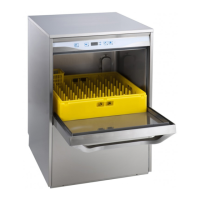What to do if rinsing is not done regularly for 2 consecutive cycles in my Veetsan VDU30?
- SSamantha SmithAug 2, 2025
If rinsing isn't occurring regularly over two consecutive cycles, several factors could be at play. Check if the rinse arms are clogged, if the rinse pump is functioning correctly, and if there's water in the level sensor tube. Inspect the boiler for scale and verify the boiler level sensor's functionality. For machines with a continuous water softener, examine the boiler level sensor inside the water softener, ensuring its float moves freely. Also, confirm the connection between the boiler level sensor and the main board is efficient. Note: Resetting this alarm without addressing the underlying cause can be dangerous, potentially damaging the dishwasher's internal components.


